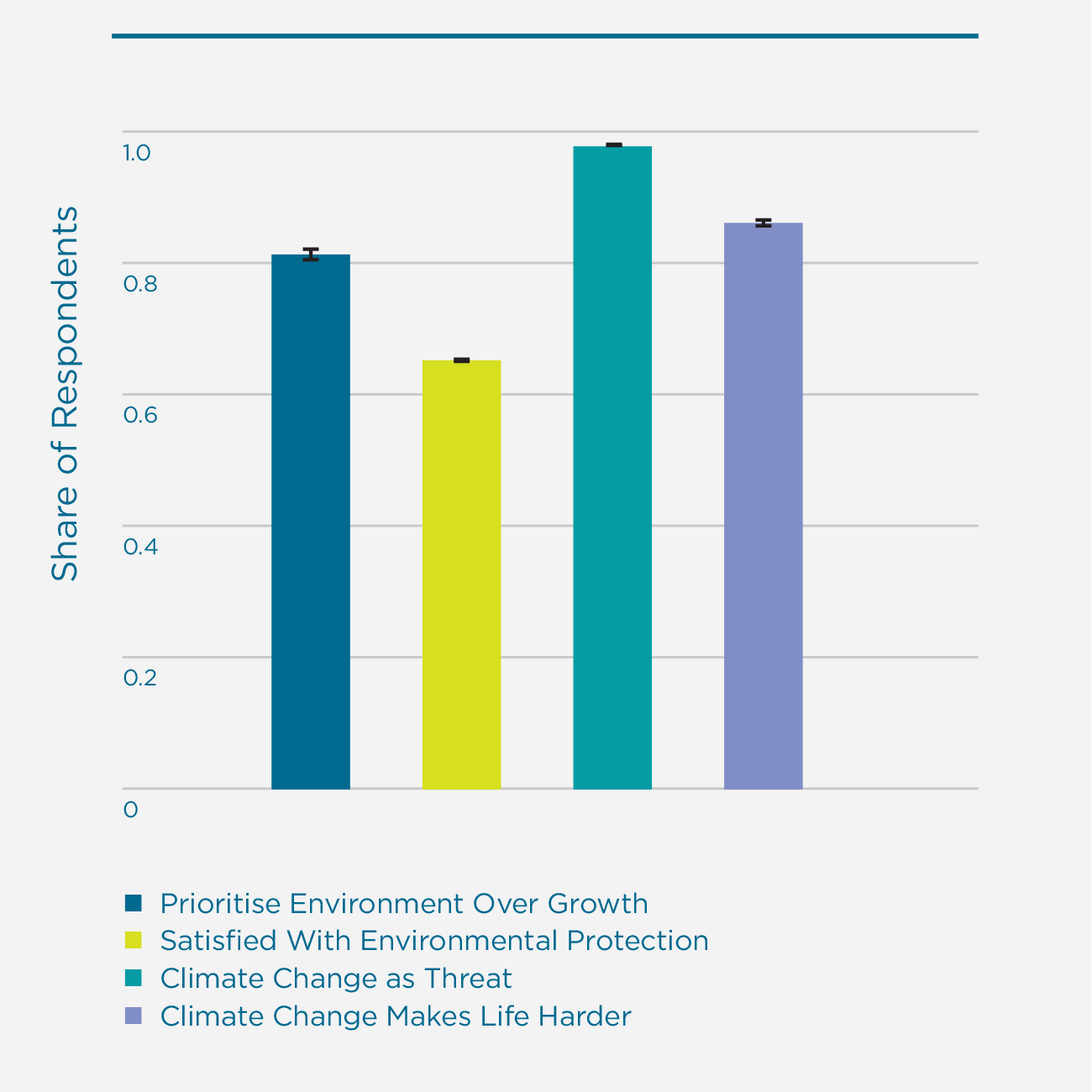
“Money can’t buy you happiness” is a popular saying, but it is not technically true.
A look at the world’s happiest countries in the United Nations’ (UN) annual World Happiness Report shows that there is a strong correlation between the wealth of a nation, which is measured by Gross Domestic Product (GDP), and the World Happiness Index (WHI). The WHI is a measure of happiness that is based on the Cantril ladder. This measure evaluates happiness by asking surveyed participants to rank their satisfaction with life on a scale of 1 to 10, reflecting 1 as the worst life imaginable, and 10 as the most perfect life.
However, wealth only makes up a small part of the picture when it comes to happiness. The top five economies in the world in 2020 are represented by the US, China, Japan, Germany and the UK (World Population Review, 2020). Yet, none of these countries appear in the top 10 happiest countries. Instead, the top 10 countries ranked by WHI mostly include the Scandinavian countries, with Finland taking the top spot (World Happiness Report, 2020). All five Nordic countries have been in the top 10 since 2013. So, what’s Finland’s secret?
What Makes Us Happy?
The World Happiness Report has been investigating what makes countries happy since 2012 and these insights have shown that the six main factors accounting for the variation in the WHI across countries are:
- GDP level
- Life expectancy
- Generosity
- Social Support
- Freedom
- Corruption
Four out of six of these factors involve social environments. In Finland and Denmark, people perceive the government as generally reliable and trustworthy, feel free to make life decisions, and trust their neighbours. This, combined with good standards of living and wealth, make it a happier place to live than countries, such as the US. In general, the report found that wellbeing inequality also significantly reduced the average satisfaction with life.
How Does Environment Affect Happiness?
Predicting a person’s happiness is a bit more nuanced than knowing just a few facts about the country that they live in. Environmental factors can also have a big impact on the happiness of individuals within a country. Hence, the impact of environmental factors on happiness were investigated in the 2020 World Happiness Report, where the happiness of people living in rural and urban environments were compared to see if there were any significant trends.
Interestingly, the report found that people in cities being happier or sadder than in rural areas varied with wealth. City dwellers were found to be happier people than those in rural areas in countries with lower GDPs. However, people living in rural areas were slightly happier than those who lived in cities in countries with high GDPs. One reason for this may be that in lower income countries, interconnectedness of cities leads to stronger communities than in isolated rural areas. However, people tend to have weaker relationships with their community in wealthier cities. Instead, people feel a greater sense of belonging in smaller rural communities in these wealthier countries.
As for the effect of the natural environment on happiness, it was found that: firstly, lower pollutants were associated with greater happiness, and secondly, the proximity to natural landscapes and green spaces spurred good moods. These findings were based on surveys of volunteers in greater London, whose locations were tracked and compared to their reported emotional states. Additionally, the report found links between Sustainability Development Goals (SDGs) and people’s life evaluations.
GDP vs the World Happiness Index
However, at the top of the list of factors affecting whether countries are happy must be whether wellbeing is prioritised in policy decisions. GDP is often used to guide policy making and measure the success of nations, but it may not lead to the most effective policies. Some arguments against using the GDP include the following (Fox, 2020):
- GDP does not consider wellbeing factors. These includes life satisfaction, health, education, and national stability.
- GDP is flawed in its own accord. For example, it misses economic activities, such as unpaid work.
- GDP does not account for long-term economic and environmental sustainability. Analysis of data in the 2020 World Happiness Report actually found that sustainability is a big priority for people. When given a choice, 62% of the people surveyed said that they would want Governments to prioritise environmental protection over economic growth, as shown in Fig 1 (World Happiness Report, 2020). Thus, this shows that there could be a mismatch with the priorities of policy makers and its citizens when GDP guides the decisions.

However, the idea of using happiness to measure a country’s success has been gaining momentum over the last decade. It may sound radical, but there is some precedent.
Bhutan, nicknamed ‘The Happiest Country in the World’, has been measuring its own Gross Domestic Happiness (GDH) since the 1970s (Oxford Poverty and Happiness Institute, n.d.). Famously, it uses GDH as the main metric for evaluating the success of its own social and economic policies. Its 2018 surveys found that 90% of its residents are happy. However, climate change and poverty have been negatively impacting the country over the last decade and surveys show that their happiness is decreasing (McCarthy, 2018).
Additionally, last year, New Zealand also made waves for ditching the GDP in favour of the WHI when planning its budget (Ellsmoor, 2019). This is likely to be a positive move for the expenditure on wellbeing, particularly on issues, such as mental health, domestic and sexual violence, and inequality.
Could Measuring Happiness Promote Sustainability?
Using happiness metrics to make policy decisions might not be the key to happier citizens only.
Using the WHI could also allow countries to factor other goals that are required for long-term happiness too. This is something that the Happy Planet Index (HPI) has been explicitly applying since 2006 (Happy Planet Index, 2016), which scales the happiness index based on life expectancy, inequality, and ecological footprint, thereby accounting for sustainability. Using this metric, wealthy Western countries do worse in their rankings. Instead, a few Latin American and Asia Pacific countries top the ranking due to their high life expectancy, wellbeing, and small ecological footprints. Ranking happiness based on other metrics, such as the UN’s Human Development Index (HDI) could achieve a similar aim (Fox, 2020).
Either way, happiness is a good thing for countries to think about optimising. Junko Edahiro, the director of the Institute for Studies in Happiness, Economy, and Society, believes that using happiness as a policy tool would, at the least, force governments to consider social, economic, and environmental factors as it is interrelated with all three of these factors (Kobayashi, 2014).
To find out more about wellbeing and other ways of contributing to a THRIVEable future, check out some other blogs from the THRIVE Project.
References
United Nations Sustainable Development Solutions Network (UNSDS). (2020). World Happiness Report. Retrieved from https://worldhappiness.report/ed/2020/#read
Fox, J. (2020). The Economics of Well-Being. Retrieved from https://hbr.org/2012/01/the-economics-of-well-being
Ellsmoor, J. (2019). New Zealand Ditches GDP For Happiness And Wellbeing. Retrieved from https://www.forbes.com/sites/jamesellsmoor/2019/07/11/new-zealand-ditches-gdp-for-happiness-and-wellbeing/
Happy Planet Index. (2016). The Happy Planet Index 2016: A Global Index of Sustainable Wellbeing. Retrieved from http://happyplanetindex.org/about
Kobayashi, E. (2014). Can Happiness Save the Environment? Retried from https://ourworld.unu.edu/en/can-happiness-save-the-environment
Oxford Poverty and Happiness Institute. (n.d.) Bhutan’s Gross Happiness Index. Retrieved from https://ophi.org.uk/policy/gross-national-happiness-index/
World Population Review. (2020). GDP Ranked by Country 2020. Retrieved from https://worldpopulationreview.com/countries/countries-by-gdp
McCarthy, J. (2018). The Birthplace of ‘Gross National Happiness’ Is Growing A Bit Cynical. Retrieved from https://www.npr.org/sections/parallels/2018/02/12/584481047/the-birthplace-of-gross-national-happiness-is-growing-a-bit-cynical























